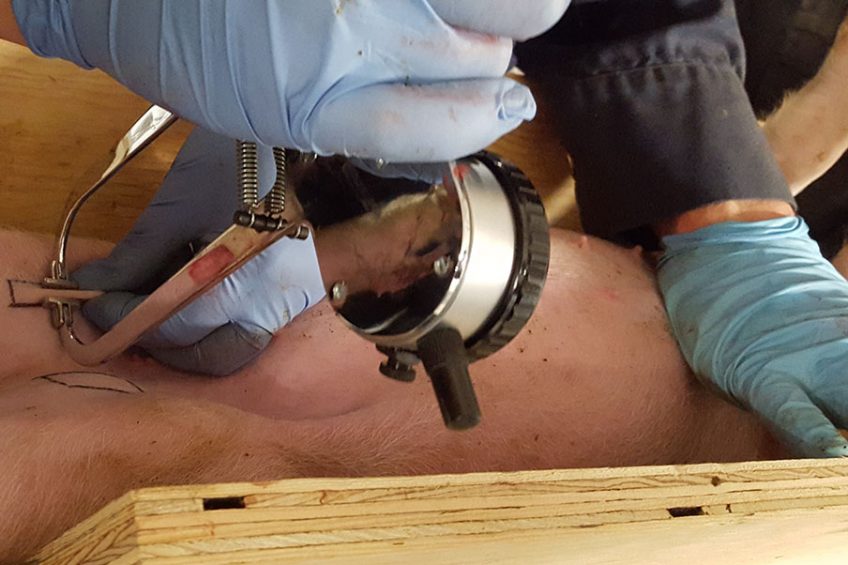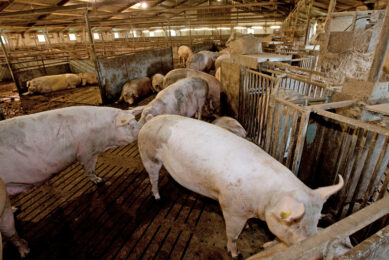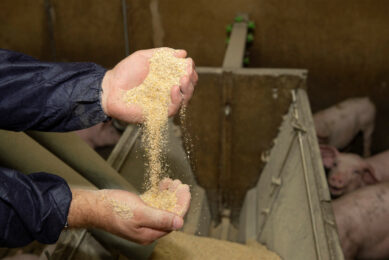Better breeding for better disease management

Preliminary results suggest that in swine there is an association between immune response phenotype and mortality. Update on research which could help pig better fight diseases such as A. pleuropneumoniae or M. hyorhinis.
Two years ago, Pig Progress reported on High Immune Response (HIR) technology. This breeding platform was invented several years ago by Dr Bruce Wilkie and Dr Bonnie Mallard at the University of Guelph, Ontario, Canada. It was first tested in pigs and then later tested and applied in dairy cattle; it’s now marketed around the world by Canada’s largest dairy genetics company (Semex Alliance) as Immunity+.
HIR technology
HIR technology allows the identification of animals that have low, medium and high immune responses, either antibody-mediated (AMIR) and/or cell-mediated (CMIR). AMIR response involves fending off pathogens such as bacteria that attack from outside the cell, while CMIR involves viruses and so on that damage the cell once inside. AMIR is measured through a blood test (how much antigen-specific antibody activity is present), and CMIR through a skin fold test (how much skin thickness changes after injection of an antigen). IR traits are inherited at a similar rate for cattle and pigs, about 25%.
Application of genomics to improve disease resilience
Ongoing research on the application of HIR in swine – with the goal of breeding animals on a commercial scale with HIR and therefore increased tolerance towards, or resistance to, multiple disease threats – falls under the Large Scale Applied Research Project (LSARP) – Application of Genomics to Improve Disease Resilience and Sustainability on Pork Production. This project is led by Dr Michael Dyck at University of Alberta, Dr John Harding at the University of Saskatchewan and Dr Bob Kemp at PigGen Canada (a group of the main Canadian pig breeding firms). It is supported by Genome Alberta and Genome Prairie, with the Ontario Genomics Institute providing funding specifically for HIR development for swine.
Dr Julie Schmied, an HIR swine research associate at the University of Guelph, is now analysing HIR tests in a commercial pig herd of about 3,000. IR phenotyping was completed in 2018 and final genetic and phenotypic analyses with relation to IR phenotype are now underway.
She said preliminary results indicate there is an association between IR phenotype and mortality, such that animals with higher AMIR are less likely to die when exposed to common bacterial and viral pathogens of swine from the nursery stage through to finish. The same was true for CMIR. Further, higher CMIR phenotypes were associated with less mortality at the nursery stage.
(Disease exposure was accomplished by seeding the research facility with pigs known to be infected with selected viral and bacterial pathogens sourced from local farms experiencing health challenges. These pathogens cannot be named by Dr Schmied.)
Analyses of disease incidence in pigs
In terms of future results, Dr Schmied said that “analyses of disease incidence in these pigs and the frequency that antibiotic treatment was given for disease presence are both expected to reveal similar results.”
Once analysis is done, the data will be presented to PigGen Canada, at which point the individual member companies will discuss any interest in the technology. PigGen has the right of first refusal to licence the tech from the University of Guelph.
In Dr Schmied’s view, the implementation of the HIR technology in swine breeding programs is timely as societal concern regarding food safety and animal health are increasing.

Read more about pig health in the Pig Progress Health Tool
Presence of antibiotic residues in meat
“These concerns encompass a broad range of issues including the presence of antibiotic residues in meat, antimicrobial resistant organisms as well as the risk of zoonotic disease,” she said.
“Therefore an effective, economical alternative, with the potential to improve productivity in addition to animal health and robustness is essential to the industry’s continued success. Breeding animals for immune response (IR) traits is one such potential alternative.”
She adds that the consequential increase in pig productivity has been estimated to translate into increased revenues of approximately CAN$ 5.00 (US$ 3.80) per pig produced.











